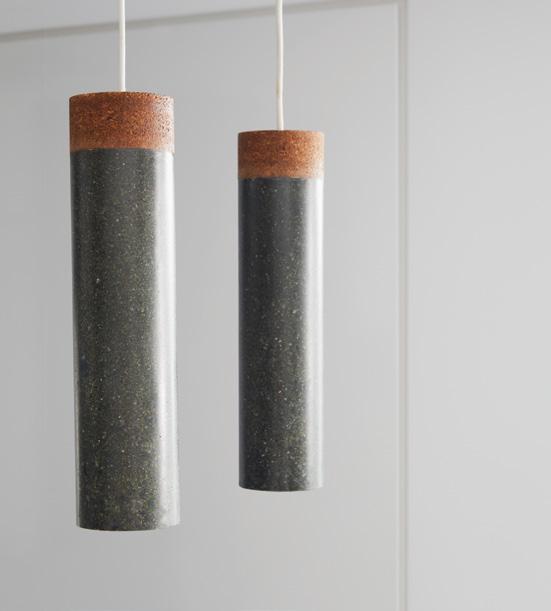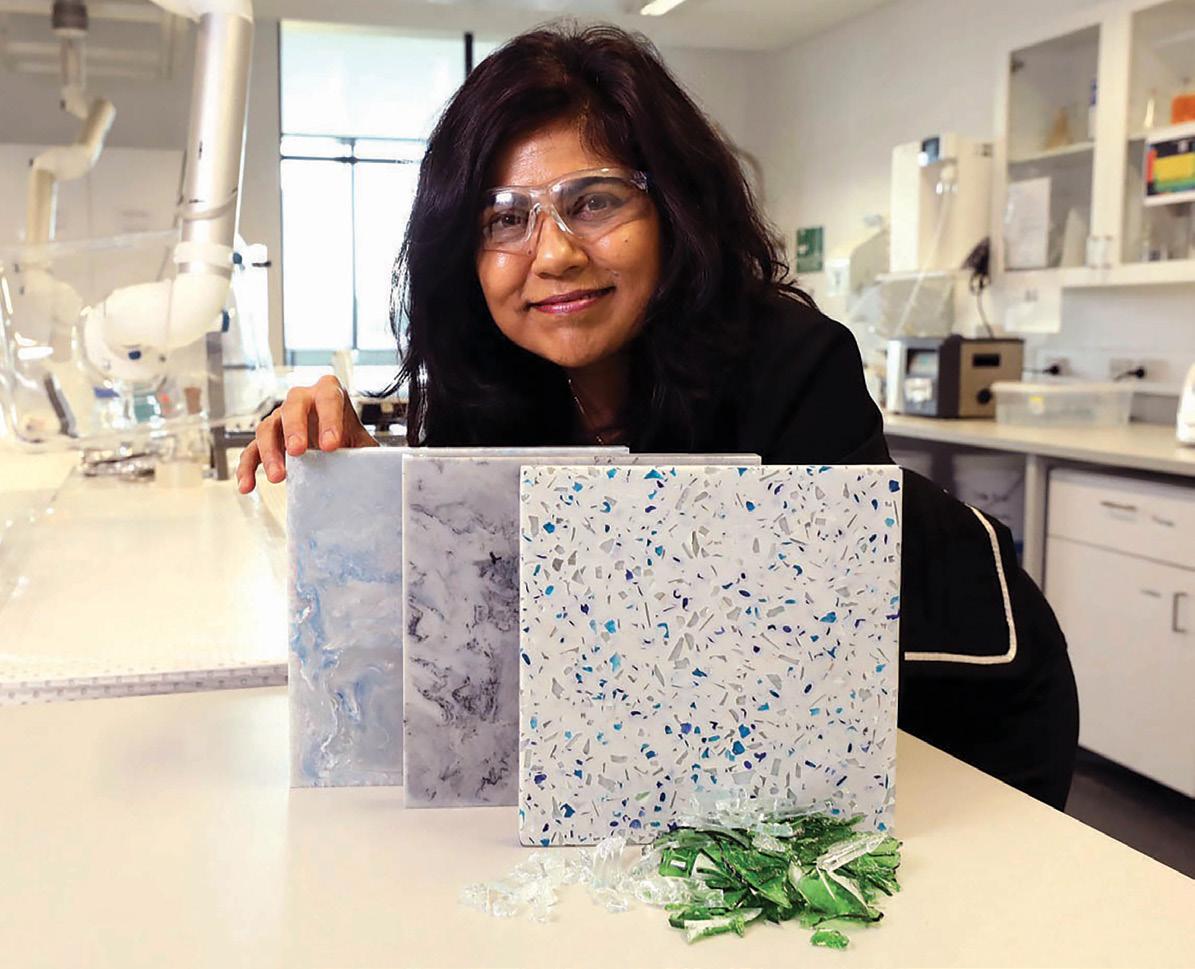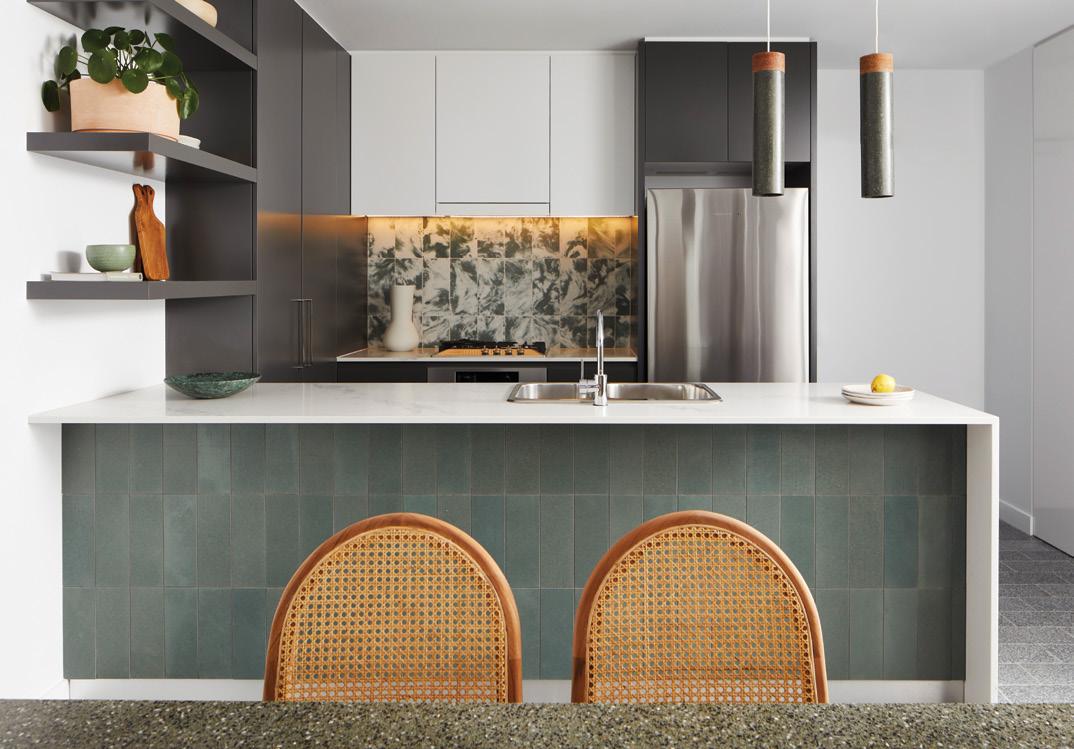
3 minute read
The apartment of the future
AN INDUSTRY-FIRST APARTMENT MADE FROM WASTE GLASS AND TEXTILES IS PAVING THE WAY FORWARD IN BUILDING DESIGN
A two-bedroom apartment built from reformed waste is being touted as the blueprint for sustainable development in the future.
Advertisement
The prototype property, part of Mirvac’s Pavilions development in Sydney’s Olympic Park, features a range of products repurposed from glass and textiles waste and reused for internal building materials.
The resulting products, referred to as ‘green ceramics’ have been used to tile the kitchen and living room floors, the kitchen bench and splash back, and used to create pendant lights, a dining table, artwork and floor lamp. Other materials have been used to create different aesthetics and textures within the apartment, with a unique feature wall in the living room manufactured using glass and jute bags once used for coffee beans.

Pendant lights, green ceramics
Images provided courtesy of SMaRT
Sustainability leaders say the project has the potential to revolutionise home construction and at the same time transform household waste into a valuable resource.
The project is the result of a collaboration that began in 2019 between Mirvac and the UNSW Centre of Sustainable Materials Research and Technology (SMaRT), with the technology the brainchild of Professor Veena Sahajwalla, a global pioneer in waste technology.

Professor Veena Sahajwalla with green tile samples
Images provided courtesy of SMaRT
While there remains an energy cost to recycle waste, all materials have a level of embodied energy, which, combined with transport, is often the most significant part of the impact of objects. When transport and virgin materials manufacturing are eliminated, energy is saved.
An important element of the new technologies is that they are designed to operate locally, collecting waste and manufacturing at source rather than large scale mass production which adds unnecessary transport to the cost and energy equation.
Months of testing were required to perfect the aesthetics and performance of the product. The material had to comply with the Building Code of Australia, passing tests for slip and fire resistance and acoustics.
Professor Sahajwalla says the green ceramic furnishings, constructed by the UNSW SMaRT Centre’s specialist MICROfactorie, showed what could be achieved when science, technology and industry worked collaboratively.
It was also required to meet the developer’s design standards, proving its ability to not only be fit for purpose but which met the essential customer requirement of being beautiful and durable.

Splashback, island front and floor tiles all from green ceramics
Images provided courtesy of SMaRT
Mirvac CEO Susan Lloyd-Hurwitz says the “take make waste” approach is no longer acceptable and it is time the construction sector found a more sustainable way to provide
Australians with homes and office buildings that are kinder to the planet. Every year around 11 billion tonnes of waste are sent to landfill globally. A further 92 billion tonnes of materials are extracted, with buildings responsible for around 50 per cent of global materials used, she says.
“In Australia, the building industry is responsible for around 60 per cent of the waste we generate. At Pavilions, we have been able to demonstrate a better way to build, using reformed waste, which not only helps our industry but provides a valuable second life for the mountains of glass and clothing, much of which would otherwise find its way to landfill.”

Blueprint for sustainable development of the future
Images provided courtesy of SMaRT
The next stage in the SMaRT Centre collaboration is to investigate opportunities to establish a MICROfactorie to enable local sourcing and manufacture of waste into green ceramics.
The SMaRT Centre is also assisting Mirvac on its other development sites in Sydney, identifying materials that can be diverted to recycling or reforming before demolition works begin.








